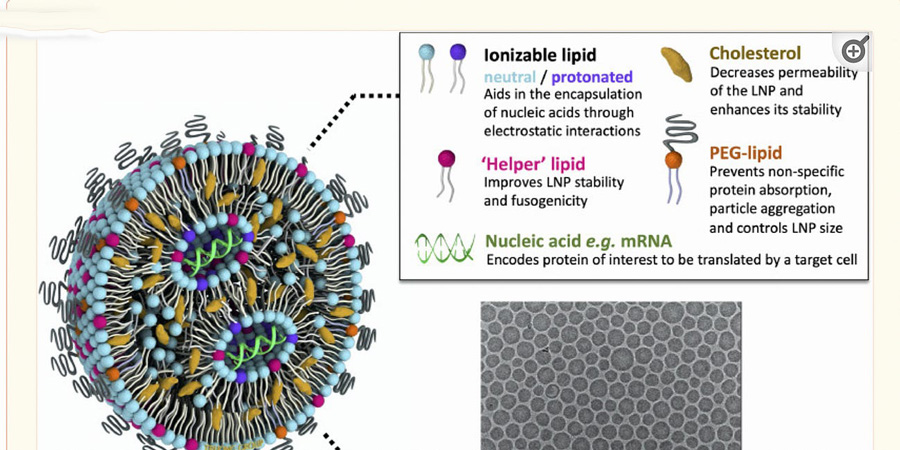Expressionless Babies, Bored Lovers
Naomi Wolf
 And Other Changes in the Human Condition And Other Changes in the Human Condition
I feel that I make notes every day on mourning a world that has passed – and at times on noticing a new world that is barely stirring. So I mourn, and at times I hope.
I’ve been traveling, and now I am home; so I have observed my fellow humans recently in airports, and on airplanes; on trains; in crowds; and in smaller gatherings.
And in the “mourning”: category I must note that some things about human beings, as an aggregate, have changed — since those fatal sixteen to 18 months, the months of mass injection, from late 2020 to mid-2022.
I have written earlier, in this essay, “Lipid Nanoparticles:” Are the Subtly Changing Human Beings?” about how people seem to be subtly changing.

Some of my essays are grounded in politics, the economy, the material world. Others reference the medical and scientific insights of the War Room/DailyClout Pfizer Documents Research Volunteers, along with other principled medical and scientific experts.
I wrote that I felt, right after the rollout of mass mRNA injection, that there had been a change in the feeling one had when one was surrounded by crowds of human beings. It almost felt as if one was surrounded by holograms, since the energy field, the force field, if you will, of individual humans — let alone of humans as a mass, whose force fields used to intensify when they were thronging together (or dancing together, or praying together) — had been shifted; had somehow faded or weakened or diluted.
I have described how I feel that when I hug vaccinated loved ones, that they seem light and frail and ethereal — that I can barely “find” them, energetically – and that only an echo or memory of their earlier “energy fields” survive. (Hugs used to pour heart energy simultaneously from one body into another. That’s why they used to feel so good. Remember that?)
I have heard unvaccinated mothers bemoan the fact that they can’t sense the bodies of their vaccinated children — their children’s physicality or imprint or presence — in the same animal way as they had done their entire lives, before. (They actually also say that they can’t smell their vaccinated children any longer either, or that the children do not have the same scent as they had before vaccination — which is not as trivial or silly a matter as you might think; mothers, along with other mammals, recognize the scents of their children from Day One of the children’s lives, and scent is a major factor in mammalian bonding: “Mother-child bonding is associated with the maternal perception of the child’s body odor”, as the title of a 2019 study, one of many similar studies, which have proven this connection for decades, points out.)
Body workers — massage therapists, Reiki therapists, acupuncturists, healers from various modalities — have told me that the energy fields of their own clients have changed dramatically since the clients’ mRNA vaccination. Unvaccinated customers of such services, for their parts, have described the fact that they don’t bother booking with vaccinated healers, since the “energy fields’’ in those practitioners’ hands, no longer make them feel better.
This all brings up an issue that is very hard to discuss in the Western context, which is why I prepared us, on this journey together, via my two recent essays about “Energies.”
Most other cultures, as I have written, take as given that humans (all living things for that matter) have signature “energies.” This is called “chi” or “qi” in Traditional Chinese Medicine, as well as in acupuncture, which originates in that discipline. “Chi” is often translated into English as “vital life force”. (It’s kind of incredible that Western medicine does not have an accepted equivalent, since my recent near-death experience for sure proved to me that one can dramatically lose or painfully regain “vital life force.”) The same energy is called “prana” in Ayurvedic medical practice and in Yogic practices. The term was cited in the 3000 year old Upanishads. “Prana” is the energy of the whole universe, and translates also as “vital force”; however in the practice of Yoga, its influence affects physical processes such as blood flow and digestion, all the way to emotions and consciousness itself:
“Prana is the source of all movement in the body. It regulates all of our conscious and unconscious bodily functions like our breath, digestion, blood flow, elimination, and cellular growth and healing. The flow of prana distributes its energy through the body based on the quality and capacity of the nadis energy channels and the chakras energy centers. Prana also animates and affects the quality of our thoughts, emotions, and consciousness. Our overall health and well being is tied directly to the quantity and circulation of prana in our body.”
So imagine for a moment that this is real — that people really do have an energy field in them, around them, that is affected by what they ingest as food or medicine or other chemicals; what they do; how they think. If you accept that this might be possible, you must accept that it may be possible to damage or disrupt “prana” or “chi” using physical or psychological means.
Now let’s consider how humans and other mammals relate to each other. Under our natural conditions and circumstances, we are always seeking one another out; always trying to communicate with one another face to face; and always touching, holding, embracing and kissing those whom we love, or to whom we are bonded. Monkeys and sea otters and chimps and koalas and human beings — all mammals — reach out, caress, connect and engage.

Studies that show that human touch diminishes stress; lowers heart rate; boosts healing; and strengthens bonding, are well established.

A bit creepily, given the timing, in November of 2020, Monika Eckstein, Ilshat Mamaev,Beate Ditzen, and Uta Sailer, in “Calming Effects of Touch in Human, Animal, and Robotic Interaction—Scientific State-of-the-Art and Technical Advances”, showed once again that touch signals safety. They summarized many studies revealing that humans are calmed and reassured via touch, explained the neural mechanisms underlying the calming effects of touch, and then — explored the question of whether robots and other “non-human” service providers, could provide some “beneficial effects of touch” via machines relating to humans: “The increased use of intelligent robots as service machines, especially in the medical context, makes human–robot interactions more and more frequent in daily routine as well as in healthcare. This raises the question of whether the beneficial effects of touch depend on the social source of the tactile stimulation or whether they can also be elicited by mechanical or robotic devices […]”
I raise this issue of how we bond, because what I am seeing in many of the human beings around me is: a failure, dissolution or diminution of physical and psychological bonding. Parents are losing the bonds with children and lovers and spouses seem to have lost bonding with one another as well.
Sights I saw recently, that before 2021 I literally never saw: I keep witnessing adult parents walking ahead of their small children, with the kids running to catch up. The body language of parents, except perhaps those with psychiatric disorders, would never have allowed for this before 2021; remember when parents were always aware of where their kids were, in crowded or possibly dangerous settings? On my way out of JFK recently, I saw a perfectly sane-looking, well-put-together mom go through security, in a crowded, chaotic setting, and not look back once at her seven-year-old, or her five-year-old, as the kids made their way through security, barely overseen by a dad struggling with luggage, folded stroller, etc. The dad scarcely looked at the two children either, as the kids walked through a scene rife with strangers, confusion, and the possibility of one or both of them getting lost.
I keep seeing versions of this — desperate-looking children racing to keep up with their families, or wandering a bit too far from their parents, with no one rounding them safely back into the parental orbit.
At the Monterey Aquarium, which we visited a couple of weeks ago, both Brian and I were horrified by scenes we could not have imagined before 2021. Glass displays filled with fish were illuminated, but the rest of the exhibit hallways in the aquarium were shrouded in darkness so intense you could barely see who was around you. Brian and I and our adult friends kept losing one another in the darkness. Meanwhile, dozens, if not hundreds, of children, some of them extremely small, were milling around, disoriented, in conditions of complete blackness, and they were getting separated from their parents continually, in a roiling crowd; this was a situation ripe for a child to get lost and very frightened, if not worse. I was appalled, as it would be so easy for another adult to take a child’s hand, and simply walk him or her away.
In the whale watching balcony outside, which looked out over the harbor and involved a steep fall if a child managed to get over the railing, I kept seeing tiny children wandering away from adults, and climbing onto the bottom rung of the balcony railing - and no one was chasing them or even watching them. (In fact I feel I have scarcely seen a parent chase a child - something we who were parents of small children in the past recall spending much of our lives doing — since 2021.)
On a return journey to JFK, I saw four children wandering alone all the way from a checkin counter, halfway around the terminal, where there were thousands of people coming and going, ultimately to enter a men’s room unaccompanied. One of the youngest kids was about six years old. I waited outside to make sure that they got out safely — but I was dumbfounded. This kind of release of children into the “wild” in a dangerous, crowded public space would have verged on a parent’s risking neglect or abuse charges, pre-2021.
To me as a parent, this all means that that “radar” you achieve along with the newborn that comes home with you from the hospital — you know what I mean, parents — that almost-sixth sense born in you along with that baby, with which you are always scanning for, always aware of, your child, in relation to possible dangers in the environment — what Brian calls “situational awareness” — is off, or dialed down, or impaired in some way, in many human parents in 2023.
Something else I am not seeing? The fascination that parents used to have in gazing face to face into the eyes of their babies. Parents of babies and toddlers used to spend hours — certainly when stuck on a plane, but also just when they were holding or carrying their children, or seated near them — gazing into the faces of their babies and toddlers and engaging with them in a million ways. They would make faces, and laugh when the little ones mirrored their expressions. They sang “Itsy Bitsy Spider”, and would start over and over when the child would cry, “Again!” They would stare into the eyes of their babies as if hypnotized, and they kissed their faces impetuously. They would dandle them and sing to them, fathers and mothers both.
This is instinctive behavior that took millennia to evolve. It helped us to survive and it helps to make us into human beings, with a range of emotions and expressions available to us.
Mothers’ brains actually change when they give birth, and a feedback loop is established that gives them pleasure when they interact with their babies. Betty Vine, in “Motherhood and the Brain: The Science Behind Kissing, Cuddling, and Making It Better”, summarizes the feedback loop that neuroscientists have established between dopamine release in the mother and her engaging with her baby:
“The first and most primal of relationships is not only experienced by every human being, but has the capacity to change every human being, socially, psychologically, and, perhaps most surprisingly, on a cerebral level.
These changes begin immediately in the mother’s brain following birth, it’s been proposed. A study published in Behavioral Neuroscience concluded that the size of mothers’ brains increased shortly after childbirth. […] Increases in gray matter have been documented in the hypothalamus, amygdala, parietal lobe, and prefrontal cortex, regions responsible for emotion, reasoning, and judgment, the senses, and reward behavior.[…]
Dr. Pilyoung Kim, principal investigator at the Family and Child Neuroscience Laboratory at the University of Denver, proposes that hormonal changes affecting the brain — caused by increases of levels of estrogen, oxytocin, and prolactin — happen immediately after birth. […] A sort of positive feedback loop seems to be operating: a baby’s smile can release dopamine in a mom’s pleasure-reward centers, further reinforcing maternal behavior […]”
Have you seen a lot of parents do this lately with their babies and toddlers? Gaze into their eyes, do just about anything to make them laugh, make silly faces, sing songs, play goofy word games?
This is what I hear when I am around parents of babies and toddlers: total silence.
This is what I see — most babies are gazing around vacantly, not even trying to get the parents’ attention, because the parents are staring vacantly elsewhere. Or else the parents are on their phones.
Indeed I have started to see toddlers and even babies being given phones or electronic devices by their parents, so that there is no human-to-human interaction between them at all.
You could blame technology — but we had cellphones before 2021.
What I am seeing may be a disruption in that dopamine feedback loop of some kind. Or it may be some other kind of interference.
And this parental lack of being enchanted by their babies, is definitely affecting babies: they used to call out to strangers; to try to sing the songs their parents sang; to verbalize incessantly; to gaze at adults and to break into beautiful smiles — even when they looked at strangers who smiled at them.
Now, many babies are becoming something you’d never think to say pre-2021 — charmless — because no one around them thinks that they are that charming.
Most often, the post-2021 babies I see are expressionless.
So what is happening now seems often to be a negative feedback loop. Their parents seem not to be that interested in them, so their faces and expressions and voices become flat and affectless, even depressed-seeming.
Moving on to lovers and spouses. Here is what was common pre-2021.
Young couples would walk with their arms around one another, or with the man’s arms around the woman. Same-sex couples embraced as well.
Young couples of all kinds would find private places in order to make out passionately.
Couples would have their arms around one another when they watched movies.
Couples would hold hands.
Friends or relatives, especially older ones, would walk arm-in-arm.
People hugged and kissed upon greeting, or when there was an upset, or in many other circumstances.
Do you see a lot of this behavior any more?
I see couples walking together side by side, sort of bumping along, but not holding hands.
I can’t recall the last time I saw young lovers kissing passionately out-of-doors. Not since 2021.
I don’t see people with their arms around one another in movie theaters, almost ever.
Has there been a disruption in the energy fields of humans, so that touch of this kind is less fulfilling? Or perhaps there has been a change in humans so that the need for it has been dialed down?
I won’t get into sexuality very much in this essay, but as I’ve written elsewhere, there is so much less flirtation, seductive conversation, alluring dress, “mojo”, erotic energy, out in the street, than there used to be — it is as if a diorama that used to be in living color, has switched to black and white.
Nanoparticles have been known for a decade to cause inflammation that negatively affects human sexual functioning. Has the “mojo” of humanity been impaired in some way?
Wang et al, in 2018,in “Potential Adverse Effects of Nanoparticles on the Reproductive System,” found that nanoparticles “[cause] reproductive organ dysfunction” and that “NPs can disrupt the levels of secreted hormones, causing changes in sexual behavior”:
“NPs can pass through the blood–testis barrier, placental barrier, and epithelial barrier, which protect reproductive tissues, and then accumulate in reproductive organs. NP accumulation damages organs (testis, epididymis, ovary, and uterus) by destroying Sertoli cells, Leydig cells, and germ cells, causing reproductive organ dysfunction that adversely affects sperm quality, quantity, morphology, and motility or reduces the number of mature oocytes and disrupts primary and secondary follicular development. In addition, NPs can disrupt the levels of secreted hormones, causing changes in sexual behavior. However, the current review primarily examines toxicological phenomena. The molecular mechanisms involved in NP toxicity to the reproductive system are not fully understood, but possible mechanisms include oxidative stress, apoptosis, inflammation, and genotoxicity. Previous studies have shown that NPs can increase inflammation, oxidative stress, and apoptosis and induce ROS, causing damage at the molecular and genetic levels which results in cytotoxicity. This review provides an understanding of the applications and toxicological effects of NPs on the reproductive system.”
These are questions. Do these nanoparticles, lipid nanoparticles, in the recent mRNA injections, which are not the same, cause the kinds of damage as did the ones in the study above?
In terms of men’s sexuality, we know that the answer is that the mRNA injections do indeed cause damage to male sexuality — that mRNA injections contain “anti-sperm antibodies.” They also damage the Leydig and Sertoli cells in the testes, which are the factories of the hormones of masculinity.
How do these mRNA injections affect female desire, which, as my 2012 book Vaginareported, is so very delicately constructed by women’s hormonal fluctuations? Those studies have not yet been completed at any scale. But when you dysregulate female menstrual cycles, for certain you dysregulate female desire, which reaches its peak in healthy women, with healthy cycles, in the days around ovulation, for obvious reasons.
If you bleed twice a month — or every day all month — or never at all — what happens to your desire?
If LNPs affect scent — they are likely to affect desire as well. Studies have shown that women are attracted to men whose immune systems are unlike their own. Men prefer the scent of women who are fertile. If women are less fertile, heterosexual men will find them less attractive. If men’s immune systems are impaired, who knows what this will do to heterosexual women’s desire.
All of these are questions.
Have the mRNA injections made parents bored by their children and unable effectively to police the area for dangers to their offspring? Have the injections ruined the hormonal context of sexual desire, a context which in the pre-2021 past used to align heterosexual women and men to one another, and drew gay men to men, and lesbian women to women, and in any event overall allowed for the reproduction of our species?
These are just questions.
And the studies — real studies, uncontaminated uncorrupted studies - need to be fully done.
But something is wrong.
Something is wrong with humans.

Naomi Rebekah Wolf is an American feminist author, & journalist. Following her first book The Beauty Myth, she became a leading spokeswoman of what has been described as the third wave of the feminist movement. Feminists including Gloria Steinem and Betty Friedan praised her work.
naomiwolf.substack.com
| ![[Most Recent Quotes from www.kitco.com]](http://www.kitconet.com/images/live/s_gold.gif)
![[Most Recent USD from www.kitco.com]](http://www.weblinks247.com/indexes/idx24_usd_en_2.gif)
![[Most Recent Quotes from www.kitco.com]](http://www.kitconet.com/images/live/s_silv.gif)


